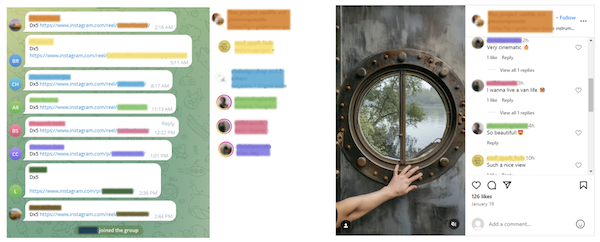Distorted Incentives and Fraudulent Behaviour in Influencer Marketing
Influencer marketing has become a key part of modern advertising. In 2023, spending on influencer marketing reached $31 billion, already rivalling the entirety of print newspaper advertising. Influencer marketing allows advertisers fine targeting based on consumer interests by choosing a good product-influencer-consumer match.
Many non-celebrity influencers are not paid based on the success of their marketing campaigns. In fact, less than 20% of companies track the sales induced by their influencer marketing campaigns. Instead, influencers’ pay is based on impact measures such as the number of followers and engagement (likes and comments), furnishing an incentive for fraudulent behaviour – for inflating their influence. Inflating influence is a form of advertising fraud that causes market inefficiencies by directing ads to the wrong audience. An estimated 15% of influencer marketing spending is misused due to exaggerated influence. To address this issue, the US Federal Trade Commission proposed a rule in 2023 to ban the sale and purchase of false indicators of social media influence. Cartels provide a way of obtaining fake engagement that does not fall directly under the proposed rule – because no money changes hands – but is still in the same spirit. While there is substantial literature on fake consumer reviews (Mayzlin et al. 2014, Luca and Zervas 2016) and other forms of advertising fraud (Zinman and Zitzewitz 2016), the literature on influencer marketing has focused mostly on advertising disclosure (Ershov and Mitchell 2023, Pei and Mayzlin 2022, Mitchell 2021, Fainmesser and Galeotti 2021), leaving the fraudulent behaviour unstudied.
How Do Instagram Cartels Work?
An influencer cartel is a group of influencers who collude to boost their advertising fees by inflating engagement metrics. As in traditional industries (Steen et al. 2013), influencer cartels involve a formal agreement to manipulate the market for the members’ benefit. The cartels operate in online chatrooms. The screenshots below show how one such cartel operates in practice. The image on the left is from an online chat room, where cartel members submit links to their content for extra engagement. Before submitting a link, they must reciprocate by liking and commenting on other members’ posts. An algorithm enforces these rules. The image on the right shows these cartel-induced comments on Instagram. The cartel history and rules make it possible to observe which engagement (comments) originate from the cartel.
Figure 1 Left panel shows posts in online chatroom submitted for cartel engagement; right panel shows Instagram comments originating from the cartel

Source: Left panel is a screenshot of a Telegram group; right panel is a screenshot from Instagram. To preserve anonymity, account identifiers are blurred and the photo is replaced with an analogous photo by an AI image generator.
What Distinguishes ‘Bad’ from ‘Not-So-Bad’ Cartels?
Our theoretical model formalises the main trade-offs in this setting, in the spirit of the imaginary citation group discussed earlier. The model focuses on strategic engagement, a decision that affects social media content distribution and consumption (Aridor et al. 2024) but has been underexplored (with the exception of Filippas et al. 2023, who studied attention bartering in Twitter). Engaging with other influencers’ content has a positive externality, leading to too little engagement in equilibrium. Forming a cartel to reciprocally engage with each other’s content can internalise this externality and might be socially desirable. However, it can also result in low-value engagement, especially when advertisers pay based on quantity rather than quality.
The key dimension to differentiating ‘bad’ from ‘not-so-bad’ cartels is the quality of cartel engagement. By ‘high quality’, we mean engagement coming from influencers with similar interests. The idea is that influencers provide value to advertisers by promoting a product among the target audience: people with similar interests, such as vegan burgers to vegans. If a cartel generates engagement from influencers with other interests (meat lovers), this hurts consumers and advertisers. It hurts consumers because the platform will show them irrelevant content, and advertisers are hurt because their ads are shown to the wrong audience. Whether or not a particular cartel is welfare-reducing or welfare-improving is an empirical question.
by Marit Hinnosaar and Toomas Hinnosaar, VoxEU | Read more:
Image: VoxEU